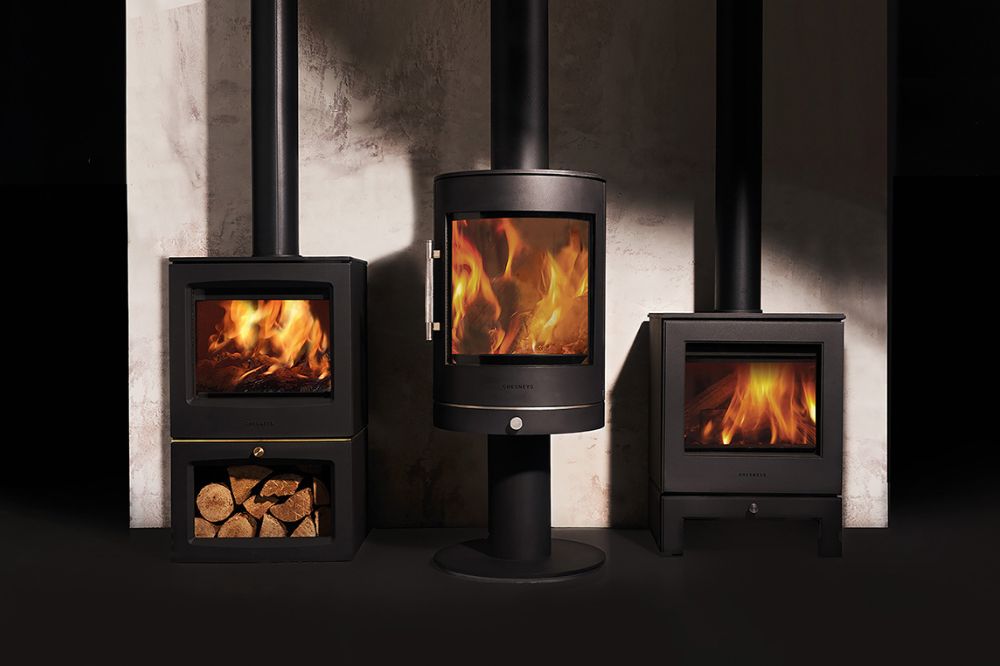

Bioethanol fireplaces have become a defining feature of contemporary interior design — admired for their real flames, clean lines, and eco-conscious credentials. But for many homeowners, architects and developers alike, one essential question often precedes the purchase:
Are bioethanol fireplaces safe?
The short answer is yes — provided the appliance is manufactured to certified standards, installed correctly, and operated responsibly. At Chesneys, we design our entire bioethanol range around these principles. From the materials we use to the installation support we provide, every detail is engineered for both elegance and peace of mind.
This guide explains what makes a bioethanol fireplace safe, what to consider when specifying one for your space, and how Chesneys ensures every product meets the highest safety and design benchmarks.
WHAT IS A BIOETHANOL FIREPLACE?
A bioethanol fireplace is a flueless, real-flame heating solution that burns ethanol fuel derived from renewable plant sources such as sugarcane or corn. During combustion, it emits only water vapour and a small amount of carbon dioxide, similar to human breath, making it a far cleaner alternative to wood or gas fireplaces.
Because it produces no smoke, soot or ash, a bioethanol fireplace requires no chimney, flue or gas line, offering complete freedom of placement and minimal disruption during installation.
At Chesneys, our collection includes freestanding, firebox (plug and play), and built-in models — each crafted from tempered glass and stainless steel, with a focus on safety, performance, and timeless British design.
CERTIFIED TO UK & EU SAFETY STANDARDS
All Chesneys bioethanol fires are independently tested and certified to BS EN 16647, the recognised European standard for bioethanol appliances.
This rigorous certification covers:
- Flame stability
- Spill resistance
- Fuel handling safety
- Emission levels
- Automatic shut-off mechanisms
Every unit is equipped with built-in sensors that monitor performance and will shut down the appliance in the event of unsafe conditions — offering added reassurance for homes, hotels, and high-end commercial interiors.
MATERIALS & BUILD QUALITY
All models are constructed using non-combustible, A1-rated materials, including brushed stainless steel, tempered glass, and precision-engineered internal components. These materials are chosen not only for their durability and heat resistance, but also for their contribution to a refined, architectural aesthetic.
Where a firebox or built-in model is to be recessed into bespoke joinery or a wall, only non-combustible materials must be used to construct the cavity. Timber, MDF, plasterboard and other flammable substrates are not suitable within the fireplace housing.
MINIMUM ROOM SIZE REQUIREMENTS
Although bioethanol produces no harmful particles, it is still a live flame. The combustion process releases small amounts of CO₂, which must be safely dispersed within the room.
For that reason, minimum internal room volumes must be met for each model:
ModelMinimum Room Volume
If you are unsure whether your space is suitable, speak with a member of our team. We’ll review your plans and advise on compliant installation, or offer suitable alternatives where required.
INSTALLATION: SIMPLE, BUT STILL SPECIALISED
All Chesneys bioethanol fires are plug and play, requiring only a standard UK electrical socket for ignition and control. There is no need for gas supply connections or structural ventilation systems, making them particularly well-suited to apartments, listed buildings, and contemporary refurbishments.
- Freestanding and firebox models can typically be installed without professional assistance, provided guidance is followed.
- Built-in and architectural installations should be carried out by a Chesneys-approved installation partner, to ensure safety, aesthetics and Building Regulation compliance.
A complete installation — even for an inset model — can usually be completed in a single day.
SAFE OPERATION & MAINTENANCE
Once installed, ongoing maintenance is simple but important. For optimal safety and performance:
- Always use approved bioethanol fuel
- Never refuel while the flame is lit or the burner is still hot
- Vacuum the burner surface with a soft brush to remove dust or debris
- Ensure the burner channel is clear of any obstructions
- Check that no foreign objects are in contact with the internal safety sensors
- Replace remote control batteries as required
A detailed maintenance guide is included with every fireplace and is also available via download on our website.
HEAT OUTPUT & PERFORMANCE
A common misconception is that bioethanol fireplaces are decorative only. In truth, they offer a real, radiant heat output of approximately 2.5 – 9kW, enough to warm a medium-sized living space.
Because no heat is lost through a flue, nearly 100% of the warmth stays in the room, making bioethanol fires ideal for:
- Supplementary heating
- Rooms with underfloor systems
- Occasional-use spaces such as home offices, garden rooms, and snug lounges
Are bioethanol fires safe?
So bioethanol fires are indeed safe and easy to use, provided they are built to the right standard, installed correctly and maintained with care. At Chesneys, we take these responsibilities seriously.
For guidance on selecting the right model for your space, or to speak to our technical team about your installation plans, contact us here.
